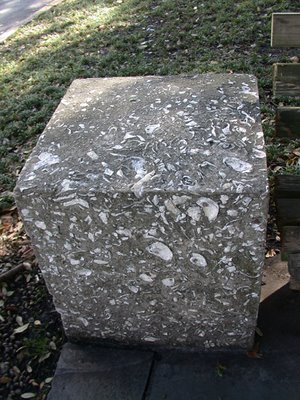
Tabby - The Concrete of the Lowcountry
Tabby is a concrete made from lime, sand and oyster shells. Its origin is uncertain: although early documents record Indian burial vaults with walls made of oyster shells and lime, no such structures have survived. It is likely that Sixteenth-century Spanish explorers first brought tabby (which appears as "tabee", "tapis", "tappy" and "tapia" in early documents) to the coasts of what would become South Carolina and Georgia. Tapia is Spanish for "mud wall", and, in fact, the mortar used to caulk the earliest cabins in this area was a mixture of mud and Spanish moss. There is evidence that North African Moors brought tabby to Spain when they invaded that kingdom: a form of tabby is used in Morocco today and some tabby structures survive in Spain, though in both instances it is granite, not oyster shells, that is used.
Early settlers found only trees and the raw materials for tabby (and none of the stones and brick-clay they had known in Europe) when they began building permanent structures in this coastal area . The Native Americans of the Sea Islands had left many heaps of shells, the accumulation of countless past oyster roasts. Builders extracted the lime by burning the oyster shells. They then painstakingly removed all salt from the shells and from the sand to keep the concrete firm and whole (the salt weakened the concrete mixture). The cleaned sand, a mixture of coarse and fine varieties extracted from sand pits, was added to the lime and shells to make the tabby concrete.
Oyster shells," wrote Earl D. Dietz, "are primarily calcium carbonate. When they are 'burned' they are heated to a high enough temperature to decompose the calcium carbonate to lime (calcium oxide) and carbon dioxide, which dissipates in the air. The resulting lime mixed with the sand, the oyster shells and water reacts with the water, and to some extent the sand, to form a bond for the mixture. Thus Tabby is a concrete. Today, artificial tabby is made using Portland cement instead of lime and the resulting 'tabby' is stronger and more stable. In this area there are many driveways and walks made from the artificial tabby." This tabby was used to construct the sidewalks on River Street.



0 Comments:
Post a Comment
<< Home